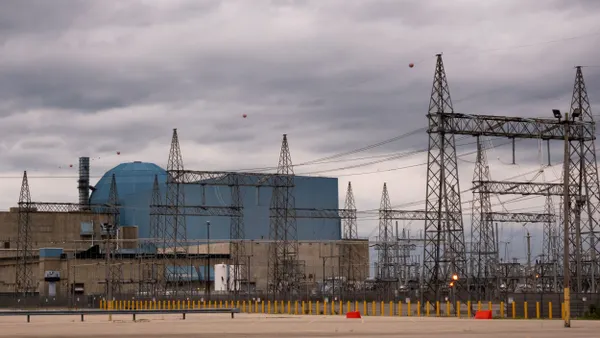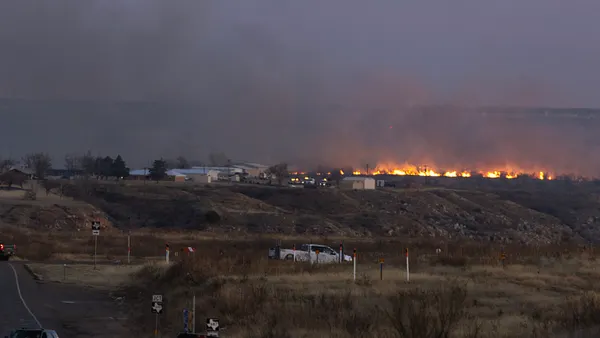Dive Brief:
- The National Renewable Energy Laboratory and Amazon are collaborating on a guidance document and new data sets intended to help companies make more informed decisions about their greenhouse gas emissions, according to a Dec. 12 news release.
- The partnership is aimed at modernizing the quantification of GHG emissions using higher-resolution data and longer-term modeling, NREL said in the release. The project will build on the capabilities of NREL’s Cambium data sets, which contain modeled hourly emissions, costs and operational data for the U.S. electricity sector.
- The guidance document will include longer-term forward-looking analyses and consider the potential emissions of large corporate projects like new data centers or facilities, NREL said.
Dive Insight:
More than 400,000 companies, utilities and other organizations have been procuring renewable energy certificates to help address their environmental impact, according to 2021 data from the U.S. Environmental Protection Agency. That trend reflects the growing importance of emissions accounting, NREL said.
“Understanding how corporate actions can influence emissions is a necessary part of the conversation around emissions reporting,” Pieter Gagnon, principal investigator and lead developer of Cambium, said in the release.
NREL’s modeling improvements are rooted in the concept of “induced structural change” and the idea that a new project can influence the grid and subsequent GHG emissions, NREL said in its release. It cites an example of a company stimulating the development of additional clean energy generation by building a new facility. “Adding electrical load has the potential to induce the construction of more non-emitting generators, such as wind and solar,” Gagnon said. “Any metric that is intended to comprehensively measure emissions would need to capture this phenomenon.”
The modeling improvements also build on research by Gagnon and NREL’s Wesley Cole in 2022, which found that the long-run marginal emission rate — which captures both operational and structural impacts on emissions — outperforms current metrics in accurately estimating GHG emission impacts.
NREL says its Scenario Viewer makes it easier for users to visualize and navigate its Cambium data sets. Users can choose their data scenario, analyze different graph forms of data and use information to make decisions about when and how to procure clean energy. It will eventually include the new data developed as part of its collaboration with Amazon, the DOE lab said.
“We want to know that we’re making decisions that maximize avoided emissions and minimize induced emissions,” Arno van den Haak, principal clean energy analyst at Amazon, said in the release. “With Pieter’s help, we’ll look at a range of interventions and provide a handbook that can help others determine their overall effect on emissions.”
A Bloomberg New Energy Finance report from earlier this year listed Amazon as the world’s largest corporate buyer of renewable energy, a status the tech giant has carried for the last three years. Amazon has procured nearly 25 gigawatts of clean energy during that period, BNEF said.
Amazon created the Emissions First partnership consisting of some of the world’s largest global renewable energy buyers, like Meta, General Motors, Intel, Heineken and Salesforce. These companies are banding together to support updates to the Greenhouse Gas Protocol. This coalition of organizations, many of which voluntarily procure clean energy beyond state requirements, could find the outcomes of this collaboration project useful for framing a standardized emissions accounting protocol for adoption, NREL said in the release
In addition to obtaining renewable energy credits, organizations will benefit from an updated reporting framework that aligns with the latest research and plays a key role in decision-making processes related to energy efficiency, electric loading shifting and investments in technologies like electric vehicles, NREL said.
NREL and Amazon noted that new emissions metrics will factor into a wider discourse on the future of how emissions are tracked, how renewable energy is valued and how multibillion-dollar renewable energy credit marketplaces can be modernized.
















